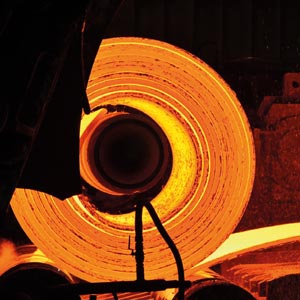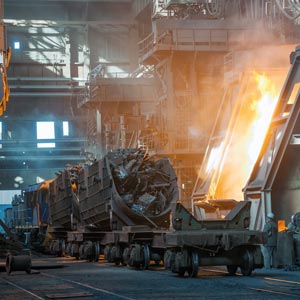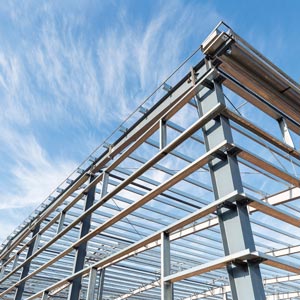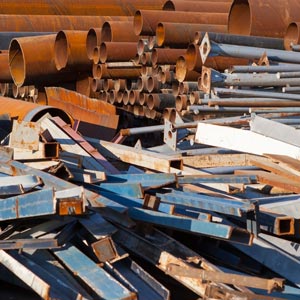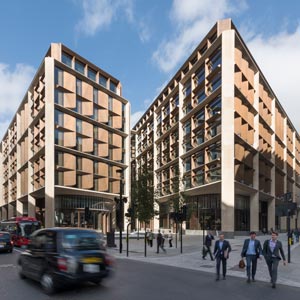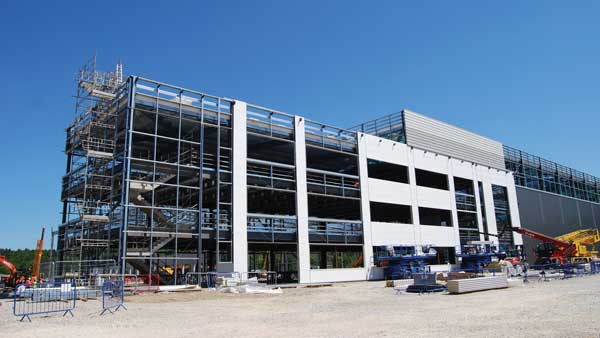Projects and Features
Steel answers sustainability – Part 2
In the second article of a two-part series, NSC publishes the final six frequently asked questions on sustainability for the steel construction sector.
6 Why are some steel construction products preferentially produced by different production routes?
All steel construction products can be produced using either of the two principle steelmaking routes, i.e. primary Blast Furnace-Basic Oxygen Furnace (BF-BOF) or the secondary, Electric Arc Furnace (EAF) route. However, for various technical and economic reasons, some products are preferentially produced by one or other of these routes.
The central issue relates to the quality control of the raw materials input to the steelmaking process and the required quality of the finished product. In BF-BOF steelmaking, the primary raw material input is iron ore and controlling the quality of the iron ore is relatively easy and therefore high and consistent quality steel can be made cost-effectively via this route. The quality is particularly important for producing flat, relatively thin products like plate.
In EAF steelmaking, the primary input is scrap steel and the quality of the steels produced are dictated by the quality and blend of the scrap. Scrap steel is usually contaminated with tramp elements and some of these elements remain in the finished products which can affect its quality. Therefore, if high quality control, i.e. sorting and blending of scrap is done, steels of high quality, such as stainless or engineering steel, can be produced. On the other hand, if the quality control is low then relatively low quality steels can be cost produced via EAF cost-effectively.
For the above reasons, structural steel plate used in the UK is produced via the BF-BOF. Hot-rolled sections are produced, equally efficiently, via either production route.
7. What is the difference between closed-loop recycling and downcycling?
Although most UK demolition waste is now recovered following demolition (it is estimated that >90% of UK demolition arisings are currently recovered and reused in some form), it is important to know how easy it is to recover and recycle different products/materials and to understand the relative benefits of different forms of recycling and reuse.
Construction materials differ significantly in the ease with which can be recovered and recycled and if we ignore this aspect then, in effect, we are equating products that are recycled with products that are landfilled!
Metals, for example, are infinitely recyclable, i.e. they can be recycled again and again into functionally equivalent products. This is the most environmentally beneficial form of recycling and is called closed-loop recycling.
Many other construction products are downcycled into new products that are only suitable for lower grade, lower values applications because the recycled product has different, usually lower, material properties. Although waste is diverted from landfill by downcycling, only lower grade primary resources are saved. For example, crushing bricks and concrete for sub-base or general fill saves aggregates but does not save the resources required to make new bricks or new concrete.
The methodology generally used in construction to quantify these relative recycling or circular economy benefits is called Module D.
8. Why are UK sections produced via the primary (BF-BOF) production route?
Hot-rolled steel sections can be produced by either the primary BF-BOF or the secondary EAF production routes. The quality and strength of the finished product (to the same product standard) is the same irrespective of the production route.
The main reasons that the UK mainly uses the BF-BOF steel production route are historical, geographical and political. The current production split of steelmaking in the UK is 80:20 (BF-BOF:EAF). Globally, the split is 70:30.
Early steel production in the UK was located in areas with local availability of the primary raw materials iron ore and coal. However, over time, it was the proximity to deep-water ports, to enable the import of higher quality iron ore and coal/coke, that was key to the development and consolidation of primary steelmaking in the large steelworks in South Wales, Scunthorpe, Teesside and Scotland. The proximity of some steelworks to other heavy industries, such as ship-building, was also important.
The capacity of the UK’s BF-BOF steel mills, largely developed in the 1960s and 70s, greatly exceeded the declining domestic demand; which fell from a peak of 28 mt in the 1970s to just 7mt pa today. This decline has hindered the ability of UK steel producers to invest in new EAF steel mills. A contributory factor has been the high industrial electricity prices in the UK which are more than 50% above other major EU economies.
9. Why is structural steel reuse not more common?
Reusing structural steel makes good environmental sense and can save money. Reuse, as opposed to the current, common practice of recycling structural steel by remelting, offers significant potential both in terms of resource efficiency and carbon emission savings.
Although technically viable, there are many practical and logistical barriers to more widespread reuse. These include the availability of reclaimed sections particularly of the desired size, volume and location, and issues relating to the quality, traceability and certification of reclaimed sections. The additional time/programme and cost of sourcing and using reclaimed steel are also barriers.
Despite the barriers, structural steel remains one of the most viable candidate products for mainstream reuse and without question, reuse will become more commonplace in the future as we embrace circular economy principles.
To help facilitate the reuse of existing structural steel, SCI has published a protocol (SCI P427) setting out recommendations for data collection, inspection, testing and design of reclaimed structural steelwork.
10. What is Module D and how do I use it?
European (CEN) Standards relating to the sustainability assessment of construction works adopt a modular approach to assess and report the impacts over the life cycle of a building. These include (Module A) from the production of the construction products and their assembly into buildings, (Module B) the use of the building over its design life and (Module C) the end-of-life of the building including demolition and disposal of the demolition waste.
Module D is a supplementary module that reflects benefits and loads beyond the defined system boundary, i.e. the building lifetime, and includes reuse and recycling potentials of materials and products recovered from the end-of-life of buildings. BS EN 15804 now mandates the reporting of Module D.
Module D is calculated based on the avoided impacts of primary production. For example, if a product is recycled, the Module D benefit is the avoided impact, i.e. the impact avoided by not producing the product via the primary production route. Where there is a loss of quality, for example crushing concrete into rubble, then a value-correction factor is applied to reflect the lower value of this type of recycling.
While BS EN 15804 and BS EN 15978 make clear recommendations about how the environmental impact data should be calculated and reported, how they are used to make decisions is outside the scope of these standards.
Guidance is therefore needed to help designers and specifiers use separate values, e.g. Module A and Module D, to make decisions. Whereas reducing Module A impacts may be a current priority for many, ignoring Module D effectively equates a material that is landfilled following demolition with one that is reused or recycled. To transition to a more circular economy, we have to start incentivising design for deconstruction and reuse and set Module D targets alongside those currently being proposed for Module A.
11. How to obtain BREEAM credits for responsibly sourcing structural steelwork?
Responsible sourcing of construction products is assessed under BREEAM Mat 03 under which up to 3 credits are achievable. Recognised schemes are listed in BREEAM Guidance Note GN18.
There are situations where a product/material specified by the design team (or chosen by the constructor) is certified at manufacture but is supplied by one or more organisations that have no relevant certification. This reduces the level of assurance because the chain-of-custody/traceability is broken (so-called ‘broken chain’). This would apply where a steelwork fabricator, without responsible sourcing certification, is using steel from a certified source, i.e. steel producer.
BREEAM therefore accepts that steelwork contractors do not need to have their own responsible sourcing certification provided that they are using a recognised quality management system and they are using steel from a certified source.








